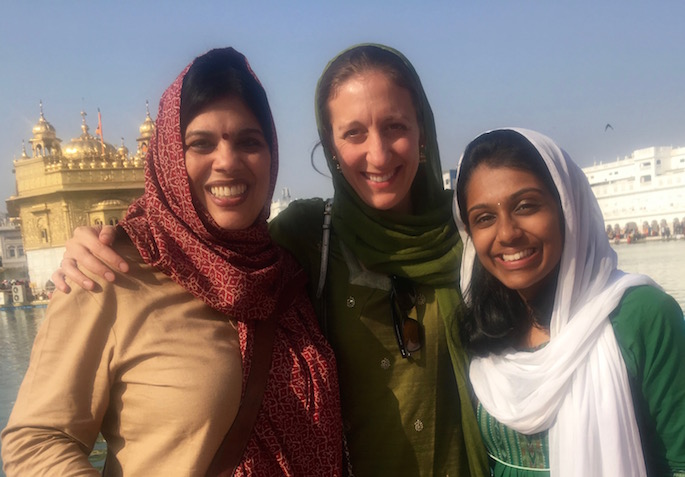Posted 10:05 a.m. Friday, Sept. 29, 2017

Professor searches deep in India’s past, finds even more in the present.
Professor searches deep in India’s past, finds even more in the present
On a Fulbright scholarship in India, Gita Pai spent hours in library archives digging into the distant past. But the UW-La Crosse associate professor of history also took time to live and learn in the present moment as she found connections with people living about 8,000 miles away from home. Pai received a Fulbright award to explore 9-12th century bronze depictions of the Hindu god, Shiva Nataraja, in the south Indian state of Tamil Nadu, during the 2016-17 academic year. Two others from UWL earned financial awards through the prestigious Fulbright U.S. Scholar Program to travel to locations across the world last year. The program aims to help build relationships between people from the U.S. and other countries that are needed to help solve global challenges. During her travels, Pai interviewed and consulted with people in India from philologists to historians to epigraphists to archaeologists about depictions of the Hindu god. Her most cherished encounters, she says, happened in southern India where she conducted fieldwork in medieval-period Hindu temples. There she met village priests, metal casters and local residents who invited her into their homes for coffee, introduced her to families, and spent hours discussing the local history and language. The meetings ended with new friendships and a promise to visit again. “I was touched by their warmth and generosity,” she says. “When one can be disheartened by news of troubling global happenings, I find these small examples of human kindness in obscure places a treasured reminder that there are good people in our world.” Along the way, Pai says she saw Shiva Nataraja not as a discrete or singular entity over many historical periods, but as various related, yet different things — such as a concept, character, divinity, ritual implement, museum piece, plaintiff, litigated object, commodity, and art, which produce a multiplicity of meanings. [caption id="attachment_49956" align="alignnone" width="685"] Gita Pai, History, left, with two other U.S. Fulbright scholars at the Harminder Sahib (Golden Temple) in Amritsar, Punjab, a holy site for followers of the Sikh religion. The Jallianwala Bagh, the site of the massacre, is located close by. This is Pai’s second Fulbright. She received a Fulbright fellowship to do research in India for her doctoral dissertation as a graduate student.[/caption]
Pai says she also traveled to places related to her teaching, which will allow her to speak first-hand in classrooms about historic sites. For instance, she saw the site of the 1919 massacre where British troops opened fire without warning on an Indian crowd who had gathered for a harvest festival in Amritsar, Punjab. It was a defining moment in modern Indian history, explains Pai, that led to M.K. Gandhi and other nationalists seeking independence from Britain. Pai discusses this in her courses on the British Empire and South Asia.
“To tell my students the general details — who, what, when, where, and why — about the massacre is one thing, but to be able to describe and show through my photographs the garden space where the massacre took place, the bullet-ridden wall, and the deep well where Sikhs leapt frantically and unsuccessfully to flee the gunfire will help convey the gravity of this horrific event,” she says.
Gita Pai, History, left, with two other U.S. Fulbright scholars at the Harminder Sahib (Golden Temple) in Amritsar, Punjab, a holy site for followers of the Sikh religion. The Jallianwala Bagh, the site of the massacre, is located close by. This is Pai’s second Fulbright. She received a Fulbright fellowship to do research in India for her doctoral dissertation as a graduate student.[/caption]
Pai says she also traveled to places related to her teaching, which will allow her to speak first-hand in classrooms about historic sites. For instance, she saw the site of the 1919 massacre where British troops opened fire without warning on an Indian crowd who had gathered for a harvest festival in Amritsar, Punjab. It was a defining moment in modern Indian history, explains Pai, that led to M.K. Gandhi and other nationalists seeking independence from Britain. Pai discusses this in her courses on the British Empire and South Asia.
“To tell my students the general details — who, what, when, where, and why — about the massacre is one thing, but to be able to describe and show through my photographs the garden space where the massacre took place, the bullet-ridden wall, and the deep well where Sikhs leapt frantically and unsuccessfully to flee the gunfire will help convey the gravity of this horrific event,” she says.
